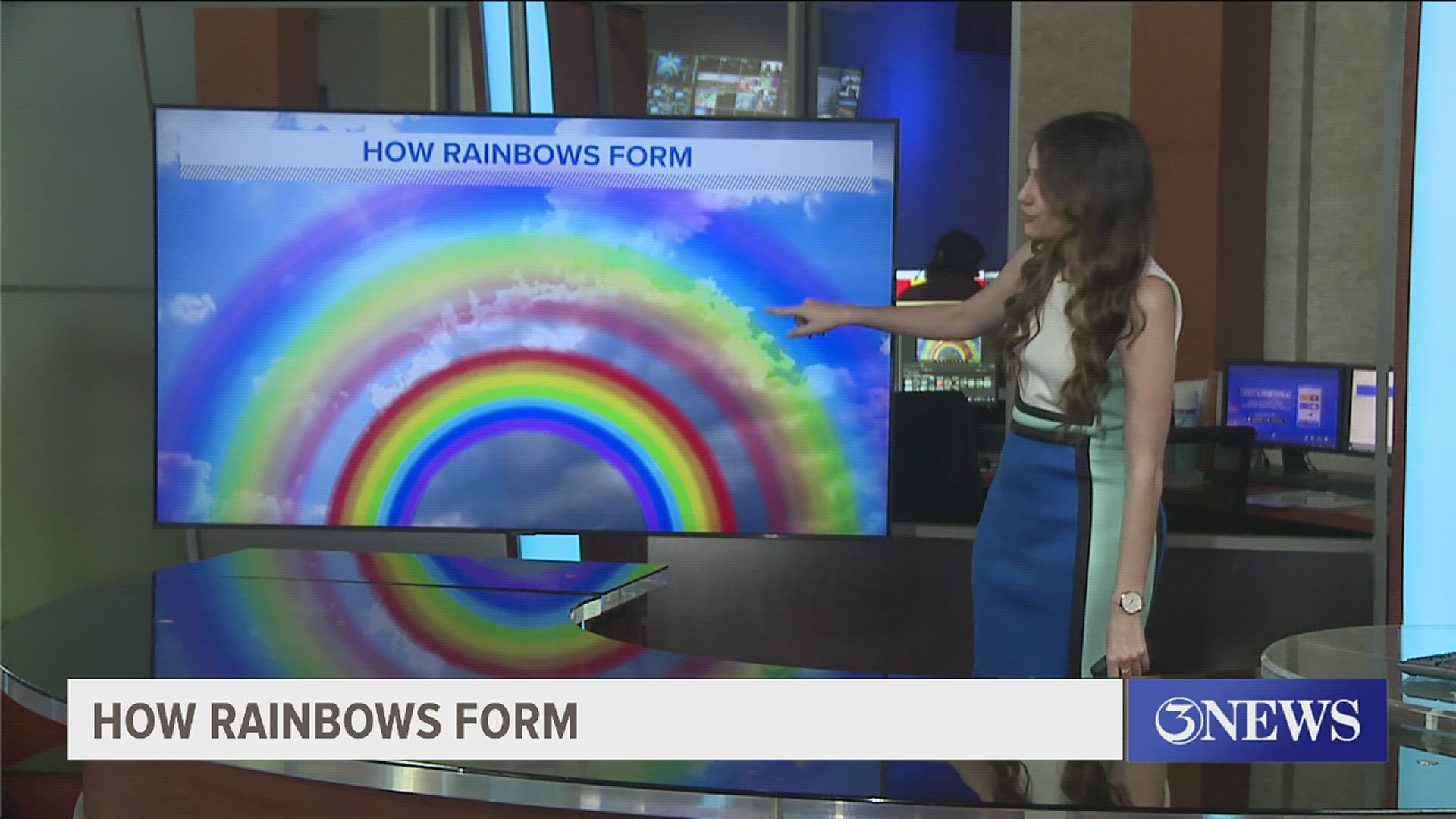Whether it's Saint Patrick's Day or National Find A Rainbow Day (April 3), everyone loves finding a rainbow - and maybe a pot of gold at the end.
I can't tell you how to find a pot of gold, but I can explain how a rainbow forms!
For a rainbow to form, we need three ingredients: sunlight, water droplets, and a proper viewing angle.

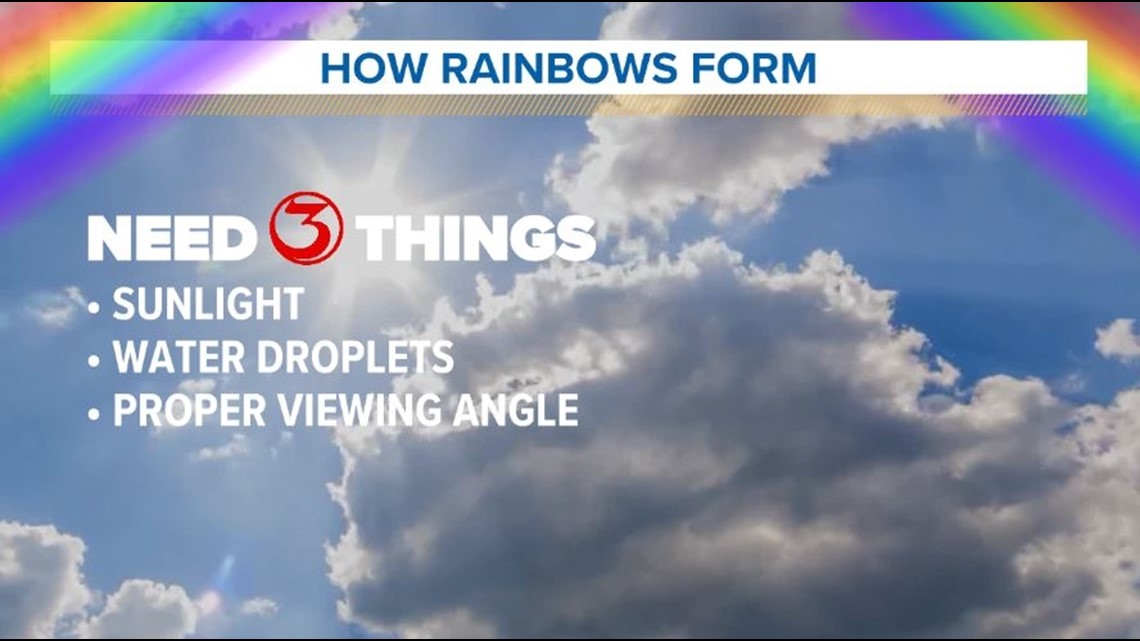
Sunlight hits the water droplet that's suspended in the atmosphere. The light beam refracts, or bends, inside the water droplet. This is the first of two refractions.
The bent light beam hits the back of the water droplet and reflects, sending it in another direction. This reflection is at a very specific angle - 42 degrees. If it's at any other angle, we won't get a rainbow.
Breaking that down a little further, let's remember that light is on a spectrum. White light is comprised of multiple colors: red, orange, yellow, green, blue, indigo, and violet. This is the order in which we see rainbows as the white light is separated into its components.
Red and blue light are on opposite ends of the visible spectrum, meaning their wavelengths are different. Each color corresponds to a different wavelength.
Red light has a longer wavelength, and blue light has a shorter wavelength. Due to their different wavelengths, they are reflected at different angles. In a rainbow, red light is reflected at the crucial 42-degree angle, and blue light is reflected at a smaller 40-degree angle.

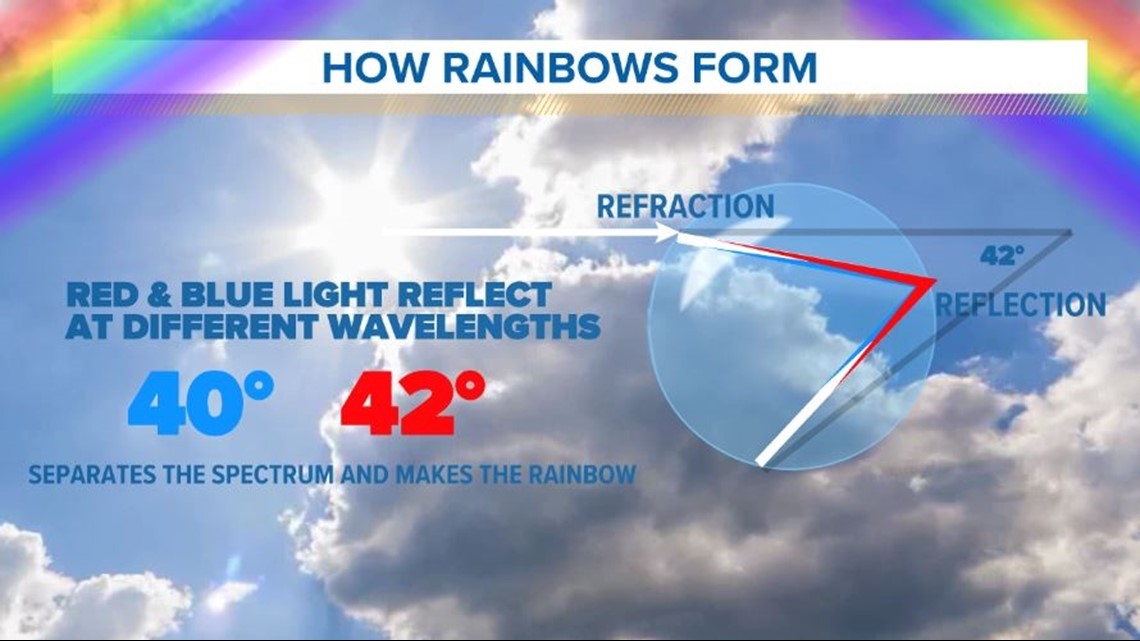
The reflection inside the water droplet is what separates the white light into a rainbow!
Due to its larger reflection angle, red light is on the outside of the reflection. The smaller reflection angle of blue light means it's on the inside of the reflection. This means that when the white light separates into a rainbow, red is actually on the bottom!
The rainbow is then refracted a second time as it exits the water droplet.

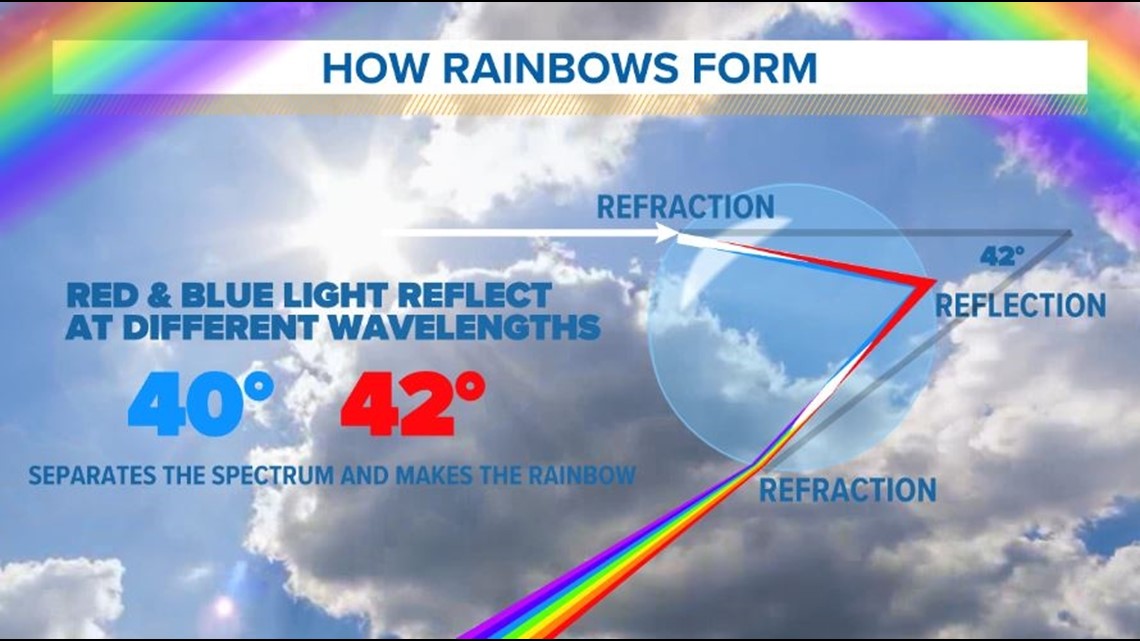
This second refraction is what flips the rainbow to what we perceive as a proper rainbow.
Red light also refracts at a steeper angle than blue light, so to us on the ground, it appears higher in the sky at the top of the rainbow instead of at the bottom.

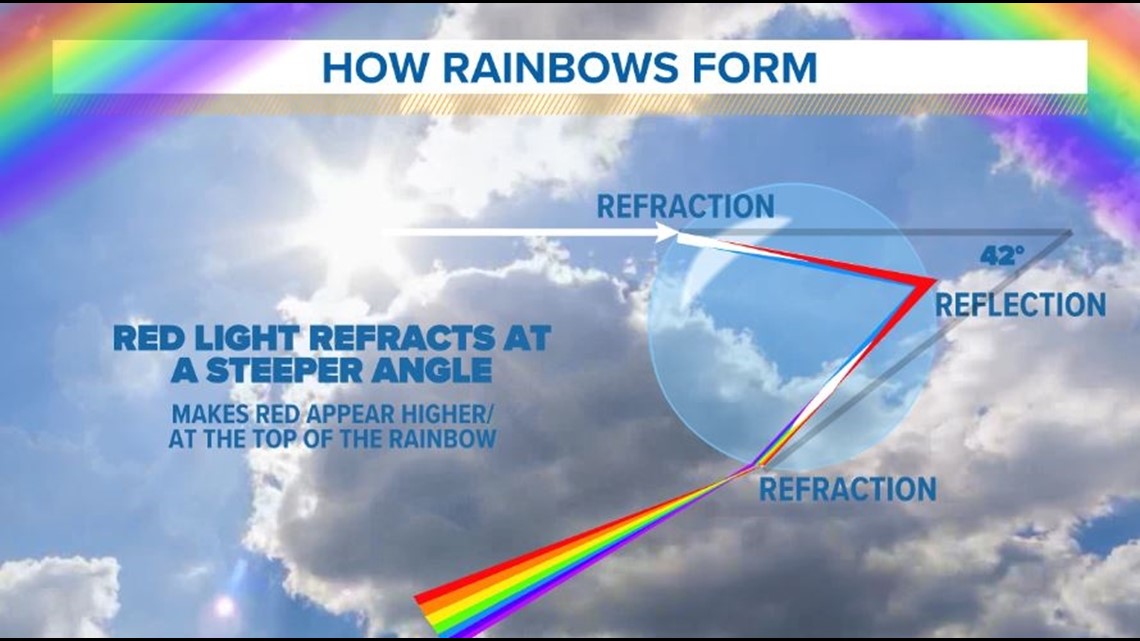
Some other cool tidbits:
• Rainbows are actually a full circle. You can see the whole rainbow from an aircraft.
• The center of the circle is called the "antisolar point."
• The radius of the rainbow - and so it's total size - depend on the refractive index of the water droplet. Saltwater has a higher refractive index, so saltwater rainbows are smaller. Freshwater has a lower refractive index, so freshwater rainbows are usually bigger.
• A double rainbow is caused by light being reflected twice (instead of once) within a water droplet. The second rainbow is above the regular one, and the color order is reversed so that violet is on top and red on bottom.
Now go impress someone with your knowledge and find that pot of gold!

